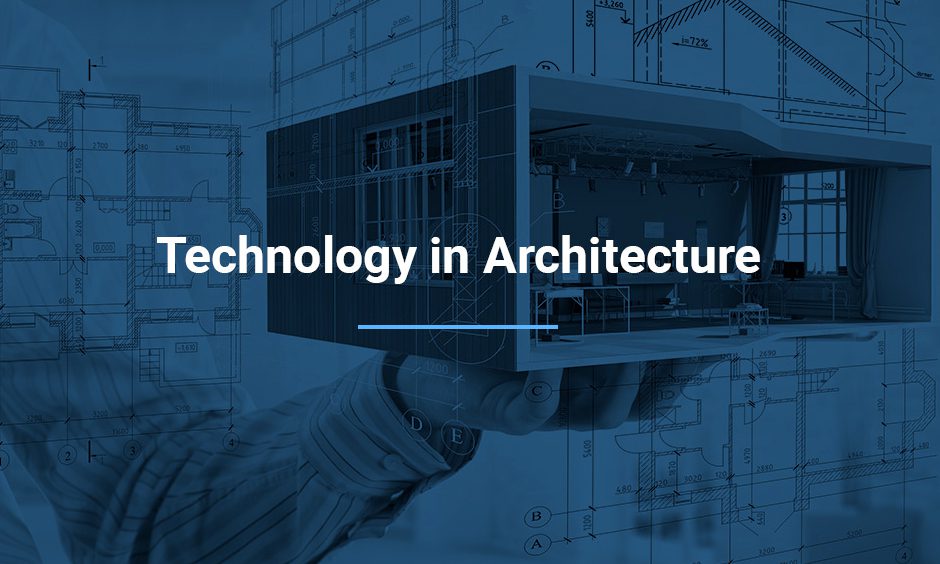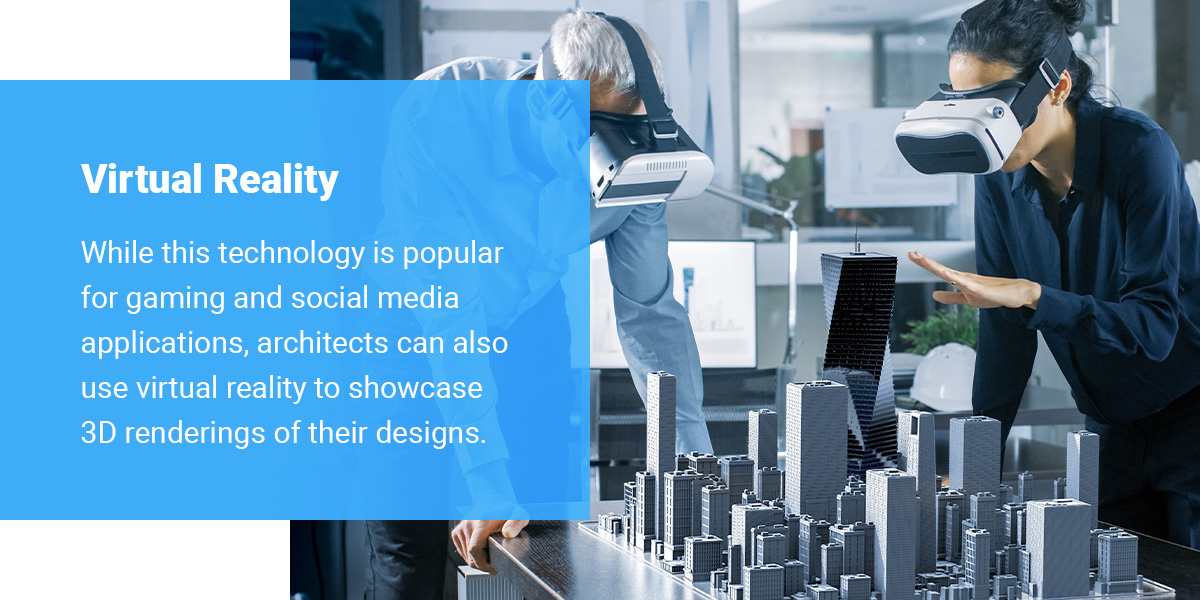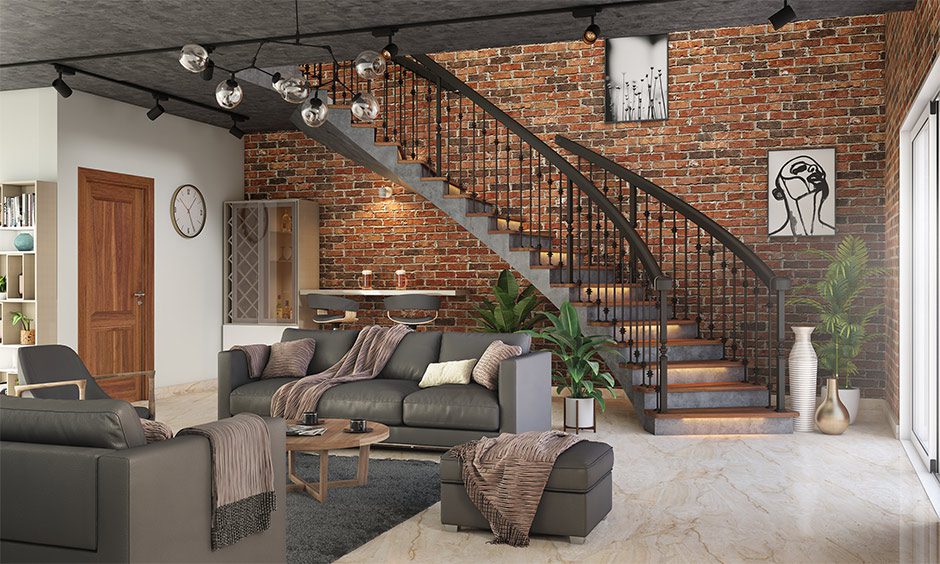
8 Major Technology Advancements Altering Architecture
The Power of Technology in Architecture
Architecture necessitates evolution. Without new technologies, designers would not be able to accommodate the more complicated demands of the industry. Architectural breakthroughs in technology have guided the way for architects from the time ancient civilizations first began stacking stones. With smart technology that can sift through data at lightning speed, this fact is truer today than ever.
Beginning with Vitruvius, we’ve seen technology, both in theory and practice, enhance the way we design buildings. Our craft will never stop evolving. And if we, as designers, continue to evolve, then we will always continue to have work to do.
There are many advantages to tapping into advanced technology to strengthen and support architectural design. As technology continually develops, it allows us to think more creatively and bring those visions from one’s mind to the screen or into a 3D print. We are able to:
Easily communicate a vision: Whether you’re pitching your team, winning clients, or communicating with real estate gurus, it’s easier to help someone buy into your vision when you have true-to-life visualization at your aid. Clients and buyers can slip into a virtual reality headset and see building plans unfolding, or touch a 3D print of their new home. This interactive experience helps connect people to the finished product like never before.
Reduce project costs: Using technology such as virtual reality or 3D printing can help clients identify areas they’d like to change before construction starts. The earlier you identify these changes, the more convenient and cost-effective the process becomes for everybody involved.
Streamline collaboration: Technology advancements such as Building Information Modeling (BIM) help everybody involved in a project stay on the same page at every step. Engineers, designers, and architects can use a BIM program to ensure their specific plans are in alignment before any cutting or welding takes place.
Continue reading to learn more about seven architecture technologies and how they’ve transformed the industry.
1. Building Information Modeling (BIM)
By streamlining all building plans, BIM lets engineers, architects, contractors, and clients operate within a shared ecosystem. BIM tracks projects through their entire lifecycle, from the planning and design stage through building and beyond. It encourages collaboration through a centralized communication and reporting system, so there are fewer mistakes and inaccuracies. BIM also lets architects access data through multiple iterations, from tables to 3D representations.
2. Animations and Renderings
Gone are the days when all you see of a building are floorplans and still photos. Animations and 3D renderings have changed the game, allowing architects to create and design a space that looks much like a finished product, even before the first proverbial brick is laid. 3D digital renderings let clients see how a space will look at scale size, with textures, lighting, and coloring, before the construction process begins.
In addition to 3D renderings, architects can harness the power of animation to create virtual tours that let clients explore multiple rooms. Architectural renderings and animations help clients visualize themselves in the space, along with virtual staging to bring a space to life with texture and color.
.jpg?width=1500&name=22014200-298%20Paoli%20Pike_Still%20Renderings_00%20Exterior_V3%20Final%20(1).jpg)
3. The Internet of Things
The Internet of Things (IoT) refers to connecting traditionally “dumb things” to the internet. If you own a home, you might already have some technology connected to the IoT. For example, smart thermostats, video doorbells, and personal assistants like Alexa are already common in many homes. And now, IoT is driving trends across the whole design and construction ecosystem. Here’s how:
- Adding Sensors to Building Information Modeling (BIM)
BIM creates an intelligent 3D model of a building and streamlines all building plans. This allows all plans to update simultaneously, so nobody in the process will be left out. How does the IoT fit into this? Buildings can now have sensors to measure things such as energy usage, temperature trends, foot traffic, and more. These sensors will collect data, and we can study this data alongside BIM plans to improve future buildings.
- Making the World a Greener Place
40% of CO2 emissions come from buildings. This percentage outstrips both the transportation and industrial sectors of society, so finding ways to make our buildings greener is a must. Designing a building with IoT in mind could help us reduce waste by not having to rely on humans to turn off machines and HVAC systems, which will have a major impact on energy consumption.
Notably, the ability to design architecture that moves and changes according to human habits and weather patterns is here. And with the Internet of Things, we can monitor our buildings that much more closely than before.
- Transforming Pre-Fabrication
With RFID technology gaining more popularity, we’re going to see prefabrication become popular again. It will be much easier for companies to track parts through the supply chain. And this ease of tracking will streamline the coordination process. Knowing this, as a designer, you can prepare for a prefab revolution beyond consumer housing. Whether as an architect, you believe this will be beneficial to design, it will undoubtedly reduce construction waste.
4. Artificial Intelligence (AI)
Planning and designing a building involves much more than putting pencil to paper. Architects must navigate a host of data to design and construct buildings. As an emerging technology, AI has become instrumental for architects, helping them wade through tons of data and assisting in analytics that help estimate various aspects of construction.
5. Generative Design
The generative design harnesses the power of AI to create a variety of design options based on a set of algorithms. With generative design, architects can create multiple designs from one idea or set of requirements, such as budget, materials, and building techniques. As a smart architecture technology, generative design can learn from each design to become more accurate and precise.
6. 3D Printing
Another example of tech for architects is 3D printing. While most common uses of 3D printing involve smaller machine parts. Architects use 3D printing to create prototypes of buildings still in the development and design stages. It saves time and labor when creating models, especially if a client makes any updates or changes to the plans. Thanks to advanced printing technology, these models are high-quality and you can customize them in a range of materials and colors.
Furthermore, architects have already begun using 3D printing to build full-scale structures at a greater speed and only a fraction of the cost of regular construction. If a client or team member has any edits after reviewing, all you have to do is make the necessary changes using programming software and re-print an updated model.

7. Virtual Reality
With virtual reality, individuals can virtually interact with a space in 3D. While this technology is popular for gaming and social media applications, architects can also use virtual reality to showcase 3D renderings of their designs. While virtual tours will always be popular, giving clients the ability to physically walk through space — even through a VR headset — can make a huge difference in the planning and design stage and save money and time on small changes.
With just the press of a button and the darkness of a headset, everybody from project members to clients can explore the building in question, taking a closer look at floors, ceilings, and entire building designs to catch the vision. Not only does this spark interest in the project more than a classic 2D image could, but it also gives plenty of room to request changes or suggest alterations before the project starts.
In exchange for relatively low start-up costs, VR can give you a competitive edge, allow for real-time changes, and reap the rewards of an impressed client.
8. Digital Sketchbooks
While technology is greatly changing the architecture industry, that doesn’t mean drawing has become obsolete. Rather, technology has adapted to architects’ needs to use physical drawing tools, providing digital sketchbooks that make it easy to save and organize designs. Digital sketchbooks also make it simpler to showcase and send designs to colleagues and clients for collaboration and approval.




